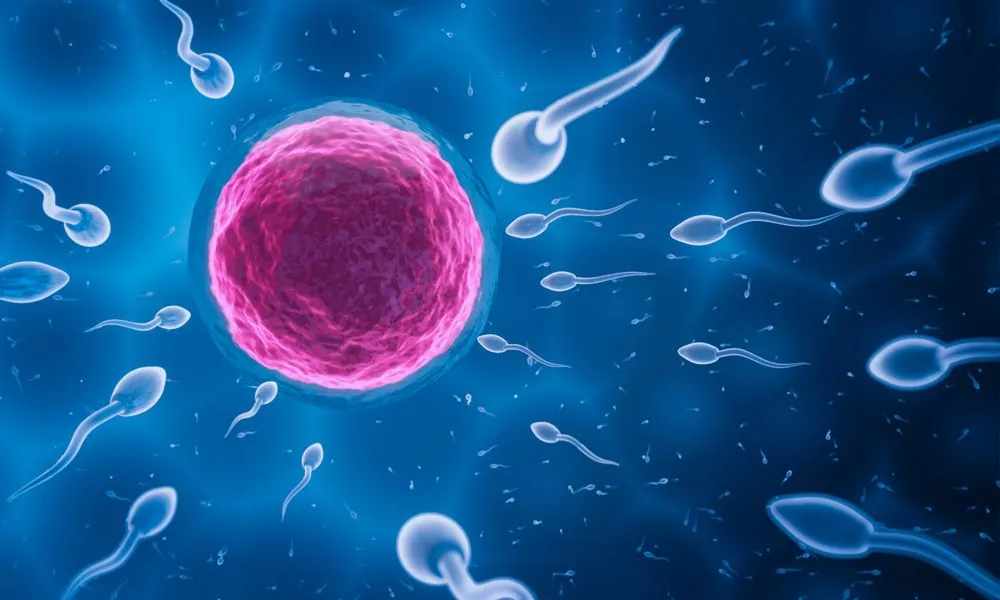We’re drowning in plastic. From the water we drink to the air we breathe, microplastics — tiny fragments of plastic less than 5mm — have quietly infiltrated our daily lives. But a new scientific study has revealed something even more shocking: microplastics were found in every single human semen sample tested in a recent Chinese study.
This isn’t just another alarming statistic about pollution. This is personal. This is reproductive. This is about human biology being silently altered by the materials we once thought only polluted the planet.
And now, it’s time to take a much deeper look at what this means for us — especially for men’s health and fertility.
Inside the Study: A Frightening Consistency

In the study, researchers analyzed semen from a group of healthy men across a range of ages and occupations. Their goal? To detect the presence of microplastic particles — and they found them in 100% of the samples.
Let that sink in.
Whether it was polyethylene (used in packaging), polystyrene (found in food containers), or polypropylene (used in plastic straws and synthetic clothing), these microscopic particles showed up again and again in semen — a biological fluid essential for human reproduction.
Even more troubling: researchers observed a correlation between the concentration of microplastics and reduced semen quality. Lower sperm counts, reduced motility, and higher sperm abnormalities were noted in samples with higher microplastic levels.
How Did Microplastics End Up in Semen?
To understand the answer, we have to trace the journey of plastic in our environment.
Microplastics are created when larger plastics break down over time. They’re in our food (think seafood, salt, rice), in bottled water, and even in the air around us. Once inside the body — via ingestion, inhalation, or skin absorption — these particles travel through the bloodstream, infiltrate tissues, and, as this study confirms, may end up in reproductive organs.
This is no longer just an environmental problem. It’s a systemic one — and it’s inside of us.
Video : Microplastics in Semen!? Alarming Research Uncovers Health Risks
What Microplastics Do Inside the Body
Microplastics aren’t just inert particles. They carry a toxic load. Many are coated with harmful chemicals like phthalates and bisphenol A (BPA), which are known endocrine disruptors. These substances can interfere with hormonal balance, disrupt sperm production, and even alter DNA expression in reproductive cells.
These hormonal imbalances can have far-reaching consequences — not just for fertility, but for overall male health. Studies have linked endocrine disruptors to testicular dysfunction, metabolic disorders, and developmental problems in offspring.
And it’s not just about the particles themselves. It’s the biochemical chaos they bring with them.
Sperm Quality in Crisis: A Global Decline
This new research adds fuel to a growing concern that’s been quietly building for years: sperm quality is falling worldwide.
In the past five decades, sperm counts have dropped by more than 50% globally, according to multiple large-scale studies. Lifestyle factors like stress, diet, pollution, and environmental toxins have been blamed — and now, microplastics may be a hidden driver behind this decline.
We are facing what scientists are calling a reproductive health emergency — and this latest study brings more urgency to the conversation.

Health Implications Beyond Fertility
The presence of microplastics in semen is just the tip of the iceberg. These particles have been found in human lungs, blood, breast milk, and placenta. Their full impact on long-term health is still being explored, but potential risks include:
- Inflammation and immune system dysfunction
- Oxidative stress leading to cellular damage
- Disruption of hormone regulation
- Potential links to cancer, metabolic disorders, and neurological damage
Microplastics don’t stay where they land. They migrate, accumulate, and trigger biological responses we’re only beginning to understand.
What Can We Do to Protect Ourselves?

While we can’t eliminate microplastics from the world overnight, there are steps we can take to reduce our exposure:
- Drink filtered water instead of bottled water
- Eat fresh food over pre-packaged and processed options
- Use glass or stainless steel containers instead of plastic
- Avoid microwaving food in plastic containers
- Wear natural fiber clothing (cotton, hemp, wool) rather than synthetics
- Ventilate your home and use air purifiers to reduce airborne plastic particles
These are small actions, but they can add up — especially when done collectively.
Why This Study Is a Turning Point
For decades, environmental advocates have warned about the long-term effects of plastic pollution. But this study is different — it shows the consequences aren’t distant or abstract. They’re happening now, inside our own bodies.
This isn’t just an ecological crisis. It’s a reproductive and public health crisis, one that could define the future of human fertility and wellness.
We must shift from awareness to action. That means demanding regulatory reform, pushing industries to create safer alternatives, and rethinking our relationship with convenience-driven plastic use.
The Deeper Lesson: Our Health Is Tied to the Planet’s Health
Microplastics in semen are not just a health issue. They’re a symbol of imbalance — between modern industry and human biology, between consumption and sustainability, between humanity and nature.
Our bodies are telling us what the planet has been screaming for decades: enough.
Video : How microplastics affect your health
We cannot separate our own well-being from the health of the Earth. And this study proves that the pollution we ignore “out there” eventually becomes the contamination “in here.”
Conclusion: It’s Time to Rethink Our Plastic-Driven World
The discovery of microplastics in every semen sample tested is more than a scientific shock — it’s a warning. Our addiction to plastic has consequences far beyond what we can see, and it’s beginning to reshape our biology in ways we never expected.
We need to act — for our health, for our fertility, for future generations. Because if plastic pollution has made it this far into the human body, it’s time we stopped treating it like someone else’s problem.
The solution starts with awareness, but it must end with change.


